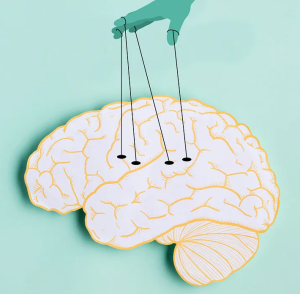
UX design isn’t just about making things look good; it’s about understanding human behaviour and using that knowledge to create designs that resonate with users on a profound level. One of the most potent tools at a designer’s disposal is the science of persuasion. By leveraging psychological principles, designers can influence user decisions and guide them toward desired actions.
Understanding the Psychology of Persuasion
The science of persuasion, often associated with psychologist Robert Cialdini’s six principles, delves into why people say “yes” and how their decisions can be influenced. These principles – reciprocity, commitment, social proof, authority, liking, and scarcity – provide a framework for creating a persuasive design.
Give to Receive
Designers can use the principle of reciprocity by providing value upfront. Whether it’s offering free resources, exclusive content, or personalized recommendations, users are more likely to engage when they feel they’ve received something valuable.
Small Steps Lead to Bigger Commitments
UX designers can encourage commitment by using the “foot-in-the-door” technique. Begin with a small request or action, such as signing up for a newsletter, and users are more likely to comply with larger requests later.
The Power of Numbers
People tend to follow the crowd. By showcasing user reviews, testimonials, or statistics about product usage, designers can tap into the social proof principle to influence users’ decisions.
Trust the Experts
Designs can incorporate authoritative elements, such as expert endorsements or certifications, to establish credibility and persuade users to trust the product or service.
Create a Connection
When users like the brand or product, they’re more likely to be persuaded. Designers can create likability by using relatable images, storytelling, and emotional design elements.
The Fear of Missing Out
The principle of scarcity capitalizes on users’ fear of missing out. Limited-time offers, exclusive deals, and highlighting low stock levels can all prompt users to take action quickly.
Applying Persuasion Principles in UX Design
UX designers can strategically incorporate these principles into their designs to guide users toward desired behaviors:
- Calls to Action (CTAs): Persuasive CTAs can leverage scarcity (“Limited-time offer!”) or commitment (“Start with a free trial”) to prompt user actions.
- Reviews and Testimonials: Showcase positive reviews and real user testimonials to tap into the power of social proof.
- Authority Badges: Display trust indicators, such as certifications or endorsements from industry experts, to establish authority.
- Personalization: Leverage user data to provide personalized recommendations, creating a sense of reciprocity and likability.
- Visual Hierarchy: Use design elements to emphasize key information, guiding users toward important actions.
- Framing and Context: Frame content in a way that aligns with the user’s goals and aspirations, influencing their commitment.
Ethical Considerations
While the science of persuasion is a powerful tool, ethical considerations are paramount. Designers must prioritize user well-being and avoid manipulative practices that exploit users’ vulnerabilities.
Conclusion
The science of persuasion offers designers an opportunity to create compelling user experiences that inspire action. By understanding the psychology behind decision-making and employing persuasion principles ethically, designers can create interfaces that not only look good but also nudge users toward behaviors that benefit them and the business.
In the ever-evolving landscape of UX design, mastering the art of persuasion can be a game-changer, enabling designers to create designs that captivate users and drive meaningful engagement.
Contact us today to see how we can help take your business to the next level!